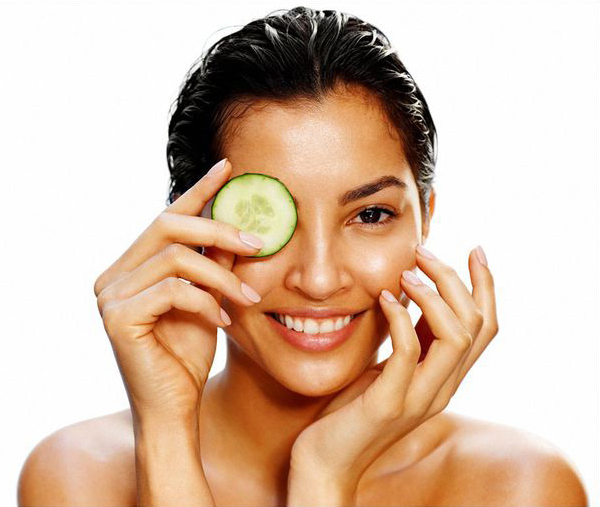Tucked away in the far right corner of my bathroom sits the last tube of ointment prescribed by my dermatologist to soothe my eczema. That was over a year ago, marking the longest period of time I have gone without a flare-up. My skin has been thriving despite the twenty-something years that I’ve had eczema. Yet now there’s a fresh itch on my left finger I just can’t get to budge. My eczema has been full of inconsistencies; it is, in part, the reason I sometimes slack on my body-care regimen. It’s hard needing to always consider that something can creep up and set my skin off.
From a young age, I’ve committed to doing everything in my power to try to minimize the discomfort of eczema. I knew that finding a dermatologist who made me feel seen, not just by my condition, but as a Latina, would be the first step in this journey. That’s when I met Dr. Miriam Casal who leads a dermatology practice in Elmhurst, Queens, a neighborhood home to a large Latin community. Dr. Casal’s entire team is Latina or Hispanic, which makes PielViva Aesthetic Dermatology feel like home. Finding a feeling of safety and comfort at the practice has been half the battle to ease the pain of living with this condition, and the rest has been all about sticking to what works, educating myself, and being in tune with my body.
Doctors advise proper diagnosis and treatment plans from a dermatologist or healthcare provider, but limitations to healthcare can often or sometimes be a factor, so LATINA checked in with board-certified dermatologist Laura Scott MD FAAD, and Miriam Casal MD, to better understand the skin condition and the daily habits individuals with eczema can incorporate into their regimen.
The National Eczema Association reports that at least one in ten people, whether Hispanic, Latino, Asian, Caucasian, or African American, will be affected by eczema in their lifetime. Dr. Casal defines eczema, otherwise known as atopic dermatitis, as a “chronic inflammatory skin condition that causes itchy, dry and inflamed skin.” It is not contagious. The skin barrier, which Dr. Scott says is meant to protects us from “the bad stuff,” becomes impaired, leaving the skin more prone to react to bacteria, irritants and allergens in the environment. The skin barriers’ purpose is also to keep water and moisture inside of our bodies. With eczema, people lose part of their skin barrier, putting them at higher risk of irritation and skin infection.
What’s that got to do with the incessant urge to scratch that itch?
As Dr. Scott explains, the chronic condition causes us to lose water from our skin faster, which is why people oftentimes experience dry skin more so than others, leading to constant itchiness. The more we scratch, the more the skin gets irritated, and so in certain areas, an individual can develop rashes on their body.
Where exactly can eczema show up?
Eczema can mark its territory in a number of places throughout the body. It most commonly occurs on flexural parts of the body, such as the inside of the elbow, behind the knee, the base knuckles on our hands, and even the eyelids. Daily body moisturizing, whether in the form of topical moisturizers or medication such as anti-inflammatory creams prescribed by a board-certified dermatologist, can help one heal and control flare-ups while preventing future ones from settling in.
What are some triggers for eczema-prone skin?
Dr. Casal summed up factors that can irritate eczema-prone skin: “dry skin, stress, fragrances, cleansing products, rough wool fabric, cold and dry air, and skin infections,” to name a few. “Avoiding the triggering factors and keeping the skin moisturized is important to avoid flare-ups.”
Dr. Scott tells LATINA that the severity of the stages of eczema differs and also depends on age. Eczema looks different in babies than it does in kids and adults. According to Dr. Scott, what dermatologists really look at is “the percentage of body surface area that is affected by eczema.”
Changes in temperature and humidity, as well as smoke and second-hand smoke can also exacerbate an eczema flare-up. I always thought that the cold weather was the sole reason why, underneath layers of the clothes, my skin felt as if it were on fire. Dr. Scott explained that “during the winter, people’s eczema can flare up, and that usually has to do with us turning on the heaters in our house causing the air to be much drier.” For some people, sweat can be an eczema trigger. To avoid this discomfort, Dr. Scott advises dressing in light cotton layers and avoiding synthetic fabrics to keep cool. In cooler temperatures, Dr. Scott recommends keeping a humidifier in the room you sleep in, a solution that can make a huge difference for people with eczema.
There’s no specific answer as to why we flare up, but we can “think” back to the aspects of our everyday lives.
Dr. Scott has her patients keep a “flare diary.” Everyone is different and there’s not one solution. But there are questions you can ask yourself. “What cleaning products have I used in the last two days? What have I eaten?” Dr. Scott mentions that during appointments, she goes through every possible trigger with her patients. She has her patients consider each part of their daily routines in relation to their flare-ups. It’s not just the foods you eat or the skin-care products you use. Some other things to consider can include candles, a new scent plug-in, or even cleaning products to wash your dishes—essentially, anything that comes in contact with your body.
Regardless of whether you’ve been able to identify all of your own triggers, Dr. Scott recommends starting with skin-care products that have been accepted by the National Eczema Association. A product receives the National Eczema Association’s seal after its ingredient list has been thoroughly cleared for top eczema triggers. Though that doesn’t mean if a product doesn’t have the seal, it’s not a good one. Dr. Scott mentioned, “if there’s a product that you know works for you, it’s okay if it doesn’t have the seal. But if you are somebody that is going through flares and are trying to look for better products, that’s always where I start.”
It may be time to rethink your bathing routine.
When winter settles in, a hot shower may be the first thing you go for to beat the chill. While it may feel good, the hot water is actually stripping moisture from the skin. For those with eczema, it can aggravate your already impaired skin barrier. As we discussed the topic, Dr. Scott reassured me that it doesn’t quite mean you should limit yourself from enjoying the little pleasures in life like hot water, as long as it’s not “piping hot” that is.
It’s all about balance. “Enjoy those first 30 to 60 seconds of hot water, then turn the temperature down when it comes time to cleanse the body,” Dr. Scott reassured us. Damp skin comes to follow after the shower, marking the perfect chance to lather up in your preferred cream or lotion.
Dr. Casal advised that flare-ups can be prevented by moisturizing the skin at least twice a day, one of those times being immediately after stepping out of the shower. Scrubbing the skin with a hard washcloth can also worsen the matter. I myself have personally always looked to the Dove Beauty Bar With Deep Moisture soap to cleanse my skin, lathering it all throughout from the neck down to the toes.
Replace the lost moisture by sealing the skin in with moisturizer.
Dr. Scott gave LATINA a crash course on the difference between a lotion, cream, and an occlusive, as well as her “holy grail” in terms of moisturizing routines.
Dermatologists consider each type of moisturizer a vehicle that ranges with different thicknesses. A lotion is water-based with a tad of moisture inside of it; due to its high water content, it may not last as long on the skin. A cream has occlusive ingredients and has less water in it than a lotion would. Dr. Casal recommends following the “three-minute rule” whether you look to a lotion or a cream as your go-to moisturizer. The rule goes as follows: within three minutes of stepping out of the shower, one should coat the skin barrier with a lather of either. An ointment, the thickest of the three, has the lowest amount of water, and is meant to seal the skin barrier up. Both doctors recommend using an unscented moisturizer and gentle unscented soap.
Creams are the perfect “in-between” for eczema patients, allowing for its thicker consistency to seep in. Dr. Scott’s holy grail is a layer of lotion or cream followed by a coat of ointment, like “slugging” which recently went viral on TikTok. The classic Vaseline Healing Jelly does the job, and can be applied on top of the eyelids and lips as well.
If you would rather use a lightweight moisturizer, Vaseline’s reformulated Intensive Care Sensitive Skin Relief Body Lotion has hydrated my skin this winter. The unscented hypoallergenic lotion contains colloidal oatmeal and was formulated with ultra-hydrating lipids that boost and strengthen the skin barrier by replenishing the ceramides we produce.
The key to treating your Eczema is doing what works for you, alongside doing research and using recommended products. In the time I’ve spent writing this article, I’ve already noticed an improvement in the appearance of the eczema rash I’m currently battling. The itch has settled, the redness has lessened, and only healing flakes remain on my knuckle, that’s how quickly proactive moisturizing and topical medications can flesh out a reaction and work in your favor. I’ve learned there are things we cannot control, but there are ways to work consciously with the skin. Rather than feeding into the sensation to itch the site, take that moment to reinforce the area with topical solution. As I’ve continued to learn how to understand my skin, I’ve curated a mental portfolio of what works and what doesn’t, and have noted all the rashes that have healed as a gentle reminder to how far my skin has come.









